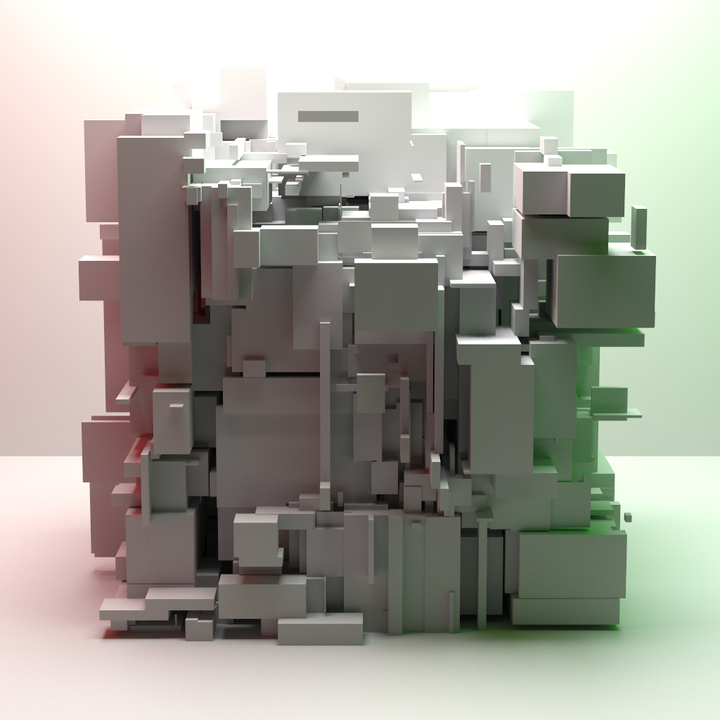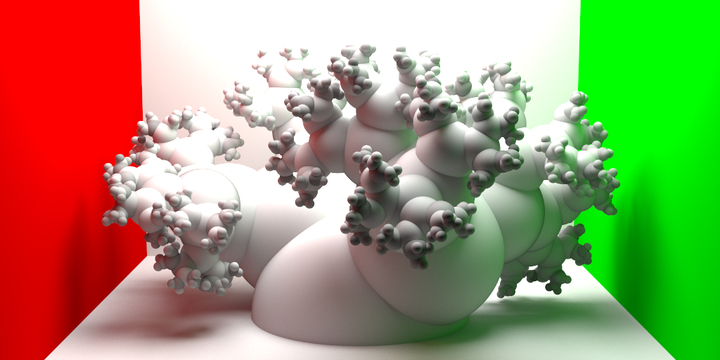Path Tracing Part 1 - Initial Renders
2016-12-20
Enter Grayt
Grayt (Go Ray Tracer) was a project that I started in mid 2014 to help me learn Go. As the name suggests, it started out as a ray tracer. Having implemented ray tracers before (in C++), this was quite straight forward but ultimately wasn’t very satisfying. I still wanted a side project to learn Go with, so I pivoted it from a ray tracer to a path tracer. Path tracers are much harder to implement, and produce more realistic renderings. The name “Grayt” stuck, even if it’s no longer a truly accurate name.
At its core, a path tracer takes a mathematical description of a 3D scene and renders it, producing a 2D image. They’re able to render highly photo realistic images by simulating light related physical phenomena that occur in the real wold.
Currently, Grayt only supports diffuse reflections. These types of reflections are only a tiny subset of the reflections that occur in the real world. However, they allow a path tracer to render matte objects with relative accuracy.
Renders
I started out with 3 different renderings, each showing off different aspects of the path tracer.
Cornell Box
The first scene I implemented is the classic Cornell Box, originally created at Cornell University as a 3D test model. My take on the Cornell Box is slightly different from the original.
The rendering contains:
- A red ’left’ wall.
- A green ‘right’ wall.
- A white floor and ceiling.
- A white ceiling light.
- Two white blocks.
All surfaces are matte. A real wold example of a matte surface would be a non-glossy and slightly rough painted surface.
In the rendering, you can observer:
- Soft shadows being cast by the blocks onto the floor.
- Green and red light being reflected off the green and red walls onto the white center blocks.
- Occlusion shadows, most visible in the back top corners of the room.
In a traditional ray tracer, these three effects must be implemented as special cases (and it’s very hard to do so accurately). In path tracing however, we get them ‘for free’ by virtue of having implemented diffuse reflections.

Split Box
My second rendering is of a procedurally generated scene of my own design. I started by taking a cube and splitting it into two pieces along a random axis. I then moved each piece slightly against the other. I repeated this on the remaining cubes over several dozen iterations. The cube stricture is white, and is situated underneath a white light. Like the Cornell Box, there are coloured walls to the left and right (off camera) that reflect coloured light into the scene.

Sphere Tree
My third rendering is also of a procedurally generated scene of my own design. I created a ’tree’ structure out of spheres. I started with a large sphere centered in the floor, and randomly added two ‘child’ spheres to its surface. I then added two more child spheres to each of the original child spheres. This continued until I had several hundred spheres.
